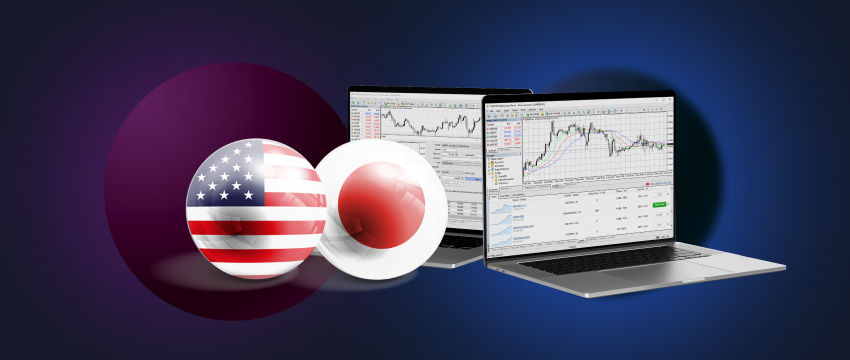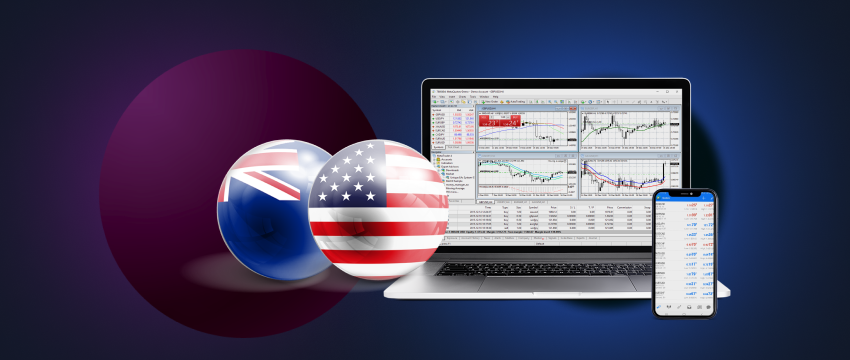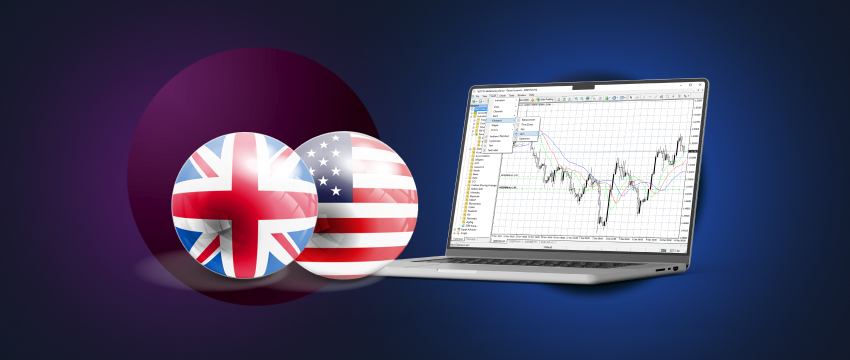In the world of forex, volatility is a key factor which represents potential risk and reward as well as a key metric in การวิเคราะห์ทางเทคนิค that can impact trading strategies. In this article, we’ll look at forex currency pairs in general, explore the 10 most volatile currency pairs as well as the most liquid pairs.
Currency forex pair
A currency pair is made up of currencies of two different countries. Each currency has its own inherent value which fluctuates based on market conditions. They are traded in pairs because when you buy one currency, you’re automatically selling another (and vice versa).
In a currency pair such as EUR/USD, the currency on the left (EUR) is known the base currency and the one on the right (USD) is the quote currency. The price of a currency pair is based on how much quote currency is needed to buy one unit of base currency.
Where is the currency forex pair traded?
Currency pairs are traded in a decentralised forex market that is open 24/5 from Monday to Friday. Retail traders make up approximately 10% of all forex trades. This means that 90% of all forex trades are executed by banks, hedge funds, and other financial institutions. There are 4 major trading sessions, namely New York, London, Tokyo and Sydney.
The most active trading takes place during the Asian, European and North American sessions, with overlaps occurring. Different time zones and daylight savings time may affect opening and closing times of these sessions.
What is volatility?
Volatility measures the amount by which price fluctuates over a given period. It measures how large the upswings and downswings are for a specific currency pair. When a currency’s price fluctuates wildly up and down, it has high volatility.
The most volatile currencies will generally have less liquidity. This is because high volatility of forex pair, often leads to uncertainty in the market; there are greater chances of drastic price movements upwards or downwards or significant weekend gaps.
Markets are often most liquid during the London session, while liquidity tends to decrease before the Japan session. Therefore, finding a balance between liquidity and volatility is crucial for identifying potential trading opportunities. We will consider US dollar pairs as the US dollar is the world’s most traded and most liquid currency.

The 10 most volatile forex pairs
1. USD/ZAR
In recent years, the South African Rand has been highly volatile. Its volatility averaged almost 13% with significant price swings, and a loss of over 20% against the US dollar with a high to low range of almost 50%.
2. AUD/USD
In the past three years, the Australian dollar has experienced significant volatility, losing more than 12% against the US dollar. It has fluctuated between historical highs around 0.8000 and lows near 0.6000.
3. NZD/USD
Over the previous three years, the New Zealand dollar, strongly tied to the Australian economy, has demonstrated an average volatility of 9.5%, comparable to that of the Australian dollar.
4. USD/MXN
Over the past few years, the US dollar has appreciated by 13% against the Mexican Peso, experiencing significant volatility. It is an attractive forex pair for traders who want volatility, fluctuating between highs of 22.000 and lows of 17.000.
5. GBP/USD
The British Pound’s average volatility of 7.7% against the US dollar, over the last three years, is lower than the previous pairs.
6. USD/JPY
The Japanese Yen has shown less volatility just a little above 7%, despite losing more than 40% of its value against the US dollar. This is because the currency pair has increased to historical highs over the years.
7. USD/CHF
Over the past three years, the Swiss franc has remained stable in relation to the US dollar. However, the USD/CHF reached parity before plunging below 0.9000.
8. EUR/USD
The average volatility of the euro against the US dollar has decreased in recent years, standing at 6.6%. Although the EUR/USD has lost about 10% of its value and even reached parity in 2022, there haven’t been any significant short-term price changes.
9. USD/CAD
Due to the close ties between the US and Canadian economies, the Canadian dollar has not fluctuated as much against the USD. However, because Canada is a significant oil exporter, it may experience volatility when influenced by crude oil prices.
10. USD/SGD
The least volatile currency pair in the top 10 is USD/SGD, which has averaged less than 4% over the last few years. Due to its narrow range, this minor pair is less attractive to swing traders looking for rapid price action.

Monitoring forex markets and forex pairs
Volatility can change over time. These figures are based on data from recent years, and volatility can vary widely in the long term. Many factors, including interest rates and geopolitical events, affect forex markets and exchange rates. It is important for traders to monitor volatility levels regularly. And adjust their trading strategies accordingly.
Traders may also decide to trade non-USD pairs such as AUD/JPY, NZD/JPY and CAD/JPY. That can experience higher volatility than major currency pairs, though there is often the risk of lower liquidity.
Depending on a trader’s trading strategy and risk tolerance, the forex currency pairs covered in this article can present diverse trading opportunities. It is crucial to manage risk and use tools like stop-loss orders to limit potential losses. Remember, forex trading carries risk, so you should always carry out extensive research before trading.
What is the most liquid forex pair?
The forex market trades approximately 180 currencies, with the most liquid pairs being EUR/USD, USD/JPY, GBP/USD, AUD/USD, USD/CHF, and USD/CAD. These pairs represent over 60% of total forex trading volume. The US dollar, considered the strongest currency as a global reserve currency, is included in most transactions and pairs.
The most liquid currency pairs are also the most tradable currency pairs.
1. EUR/USD – Top forex pair
The EUR/USD pair is in the top position. As already mentioned, this pair accounts for over 20% of trading volume in the forex market. For global traders, this ensures tighter spreads.
2. USD/JPY
The USD/JPY ranks as the second most actively traded pair, characterized by high liquidity, and it constitutes approximately 13.5% of trading volume in the forex market.
3. GBP/USD
The GBP/USD pair comes in third. This currency pair makes up slightly over 9% of total trading volume.
4. USD/CNY
The USD/CNY currency pair is ranked #4. CNY refers to the Chinese renminbi, otherwise known as the Yuan. This pair accounts for about 6% of daily forex trades.
5. USD/CAD
The USD/CAD currency pair comes in at 5th position. It has a 5.5% forex market share. US and Canadian interest rates, along with oil as an economic driver in Canada, typically influence the price of this pair.
6. AUD/USD
At 6th place is the AUD/USD pair. การเทรด this pair is referred to as trading the “Aussie”. As far as market share is concerned, the pair accounts for just over 5% of the total market share.

Forex pair trading with T4Trade
T4Trade offers its traders a flexible and safe trading environment with competitive spreads, flexible leverage, and fast withdrawals and deposits. You can access more than 80 currency pairs, including the most traded currency pairs such as the EUR/USD, GBP/USD or USD/JPY and enjoy tight spreads and low costs.
T4Trade also has multiple accounts for you to choose from. These accounts aim to meet the diverse needs of traders worldwide, allowing you to choose one that aligns best with your goals and trading experience. The broker’s top-tier 24/5 multilingual customer support team is also available to provide assistance via email or Live Chat.
Disclaimer: This material is for general informational and educational purposes only and should not be considered investment advice or an investment recommendation. T4Trade is not responsible for any data provided by third parties referenced or hyperlinked in this communication.




